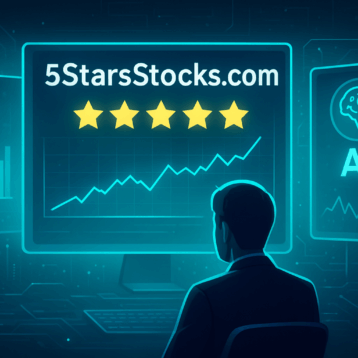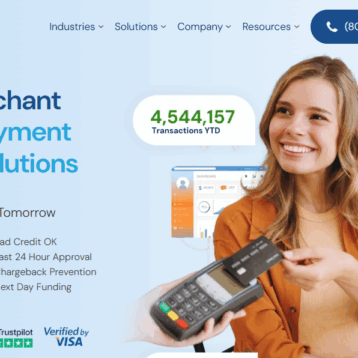
A lot of people think starting an e-commerce business is as simple as setting up a Shopify store, making an Instagram account, and waiting for the orders to roll in. It sounds effortless, like an easy side hustle that prints money overnight. But what’s the reality? Well, it’s definitely not this for sure! If you want a successful ecommerce business, this mentality is probably the fastest way to fail before even making a sale.
Now, you need to understand that e-commerce isn’t just about listing products online. It takes real investment, money, time, research, and planning. The idea that a business can thrive without putting in anything upfront is why so many never make it past the first few months. But the biggest mistake? Well, it’s trying to do everything on the cheapest budget possible.
Now sure, cutting corners might seem like a way to stay lean, but in e-commerce, certain investments are non-negotiable. Without them, the store is just another website floating in an ocean of competition.
The Right E-Commerce Platform isn’t Free
Now, you need to understand that a website isn’t just a place to list products, it’s the entire foundation of an e-commerce business. So, the wrong platform will make customers bounce faster than they clicked in. Free or cheap website builders might seem tempting, but they come with slow load times, clunky checkout processes, and limited customization.
Seriously, so many businesses get this wrong all day. But a proper investment in an e-commerce platform means choosing one that is scalable, secure, and built to convert. The most successful stores don’t just look pretty. They work behind the scenes to make buying easy. That means fast page speeds, mobile optimization, and seamless payment processing. If customers struggle to check out, they won’t hesitate to click off and find a competitor who does make it easy.
Never expect free to be great, the same can be said for cheap, it just won’t work out!
Branding is the Entire Identity (Not Just a Logo)
Yes, this is something that still doesn’t seem to get much understanding! So, skipping branding is one of the fastest ways to disappear into the noise of e-commerce. Just think about it; if a business with no clear brand identity just looks like another reseller, and customers won’t feel a connection. The name, the colors, the messaging, everything needs to feel cohesive and memorable.
What’s another mistake? Well, a logo from a free template won’t cut it. Yes, skip out on what Canva is serving, it’s not good enough. The biggest e-commerce brands are instantly recognizable because they invested in professional design from day one. Just think of it like this; a strong brand doesn’t just make the website look good, it makes people trust the business. Without that trust, getting sales is an uphill battle.
Inventory isn’t Just Buying Products
Some e-commerce businesses operate on a dropshipping model, meaning they don’t carry inventory. But for those that do? The way inventory is handled can make or break the launch. Now, there’s nothing inherently wrong with dropshipping, but there’s this idea that it’s easy money.
Now, just think about it like this; ordering too little stock means running out fast, losing potential customers, and dealing with backorder headaches. Ordering too much means being stuck with unsold products and wasted money. There needs to be a balance, and that balance comes from data, not guesses. You can’t really have guesswork, basically, there’s just no room for guesswork.
So it might be a good idea to look into something like automation from NetSuite apps, for example. You need info in real-time, you can’t just go and manually count it (and sometimes that’s literally not possible). You want to prevent over-ordering or running out of stock at the worst possible time, right? Well, realistically speaking, that does mean investing money (and time) to get the right software and tools. Seriously, don’t cut corners!
Marketing Needs a Budget
Okay, so too many businesses assume social media will do the heavy lifting for free. The thinking goes something like this: post a few TikToks, gain followers, and the sales will come naturally. It sounds nice, but it rarely happens that way. Marketing isn’t just content, it’s a strategy.
You’ve got paid ads, influencer collaborations, and search engine optimization that bring customers in. Relying on organic reach alone is like hoping people will randomly stumble into a brick-and-mortar store with no sign.
Besides, advertising doesn’t need a massive budget, but it does need some budget. Running targeted ads, sending PR packages to influencers, and investing in SEO tools help the business get seen by the right people. The most successful brands know visibility isn’t accidental. It’s bought.
Product Photos Sell More than Product Descriptions
Just think about this one for just a moment; nobody buys something online without seeing it first. Yet so many businesses throw up blurry, poorly lit product images and wonder why nobody is clicking “add to cart.” The difference between an abandoned product page and a best-seller is often as simple as high-quality visuals.
Like it or not, professional photography should be treated as an investment, not an extra expense. If hiring a photographer isn’t an option, investing in good lighting, a proper camera setup, and editing software is the next best thing. The goal is to make the product feel real through the screen. You need to keep in mind that bad photos make a business look untrustworthy. Great photos make a product feel irresistible.
Customer Service Needs to be Ready Before the First Order
So, this one might sound weird, but bear with it for just a moment; a business isn’t just the website and the products. It’s also the experience that customers have after they buy. But in all seriousness, nothing kills credibility faster than slow response times, ignored emails, and no clear way to get help when something goes wrong.
So, before launching, there should already be a plan in place for customer service. That includes setting up automated email responses, live chat options, and a clear refund and return policy. If customers have to search for how to contact support, they’re already frustrated. And frustrated customers don’t come back.
Packaging Matters More than Most People Think
Packaging isn’t just about protecting the product during shipping. It’s part of the customer experience. The best e-commerce brands know that the unboxing moment is just as important as the product itself. It’s why people film unboxing videos, why premium packaging makes products feel more valuable, and why cheap, boring packaging feels disappointing.
People love that experience, it just makes them feel like it’s Christmas, or their birthday, or something like that. So, a plain mailer bag might save a few dollars, but it also makes the product feel forgettable. Overall, investing in branded, high-quality packaging makes customers more likely to share their purchases, recommend the brand, and come back for more. The small details matter.
Pay Extra for Security and Payment Processing
Customers trust online stores with their money. That trust is fragile, and it’s earned by having secure, seamless payment processing. As unfortunate as it is, a lot of businesses will take shortcuts on this part. But a payment system that glitches, declines cards for no reason, or makes checkout confusing is a direct ticket to lost sales.
Legal and Compliance Costs aren’t Optional
Seriously, this isn’t optional in the slightest. Nobody likes dealing with paperwork, but skipping legal and compliance requirements is a fast way to get shut down. Actually, a lot of new e-commerce businesses out there don’t realize that even small online stores need to comply with tax laws, privacy policies, and return regulations. Ignoring these things doesn’t make them go away, it just creates bigger problems down the line (and it will get really bad).










